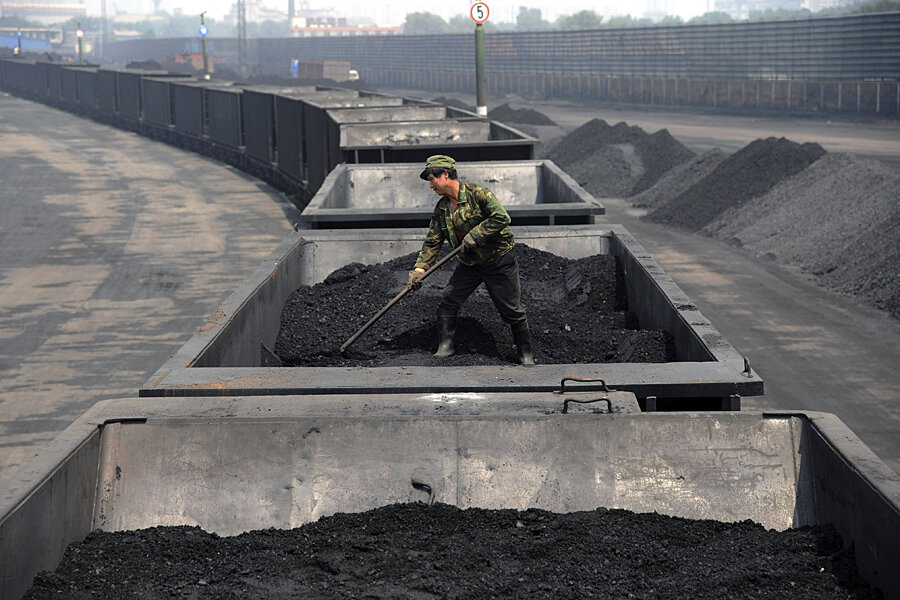China, India leaders are no shows at UN Climate Summit. Why that's OK.
Loading...
Can a UN Climate Summit about reducing global carbon emissions be successful if leaders from two of the largest polluters don't show up?
China President Xi Jinping and India Prime Minister Narendra Modi won't be joining heads of state from over 120 countries as they plan for a cleaner energy future at a UN Climate Summit in New York Tuesday.
Some are concerned about their absence at the New York climate talks – widely regarded as a critical preparatory meeting for achieving a negotiated agreement at next year's talks in Paris. As the world's largest and third-largest carbon emitters respectively, China and India will play an outsize role in determining the fate of the world's energy supply and its impact on global climate. Is their lack of senior-level showing (lower-ranking officials from both countries are expected to attend) at New York a sign the two emerging superpowers aren't serious about climate change?
Not exactly. Certainly, most watchers would prefer to see Mr. Xi and Mr. Modi present at the talks Tuesday, but it's unfair to interpret their absence as a rejection of efforts to curb global emissions, analysts say. While both countries continue to fuel their impressive growth with carbon-heavy coal, they also have made significant strides toward cleaning up their energy supply. China installed more solar power last year than any other country ever. In July, India doubled it tax on coal in an effort to rein in smog and promote renewables.
Questions linger over what direction these leaders will take their countries – particularly in the case of Prime Minister Modi, who at times seems less willing to acknowledge the human-induced climate change that most scientists support. But a rain check at New York doesn't necessarily mean a failure in Paris.
"What’s most important is what they’re prepared to put on the table next year ahead of Paris," says Elliot Diringer, executive vice president of the Arlington, Virginia-based Center for Climate and Energy Solutions. "New York is an opportunity to build momentum, but this is not the moment when countries will be proposing their concrete targets."
At the last round of global talks in Copenhagen in 2009, China and India agreed to ambitious cuts in carbon intensity. By 2020, China aims to reduce its carbon dioxide emissions per unit of GDP by 40 to 45 percent from 2005 levels. India said it would reduce its emissions per unit of GDP 20 to 25 percent below 2005 in the same timeframe. It's too soon to know for sure if they'll meet these goals, and climate experts will be watching closely to see if and how they expand them before or during next year's talks in Paris.
One question, according to Mr. Diringer, is whether they will continue to set goals based on carbon intensity, or if they instead focus on reducing total, absolute emissions. The second question is a matter of degree. Will these be dramatic cuts that inch the world closer to its goal of keeping warming within 2 degrees C? Or will economic concerns move them to set more conservative targets?
Of course, China and India won't shoulder all the responsibility in global climate efforts. How much developed nations pledge to contribute to the Green Climate Fund will very much set the tone for talks next year. The fund, established by the UN at the 2010 talks in Cancun, is intended to help finance clean energy and climate projects in the developing world. The goal is to raise $10 billion to $15 billion from rich nations in the run up to Paris, but, apart from a $1 billion pledge from Germany, the fund has struggled to get off the ground. If it fails to meet its goals, developing countries may see it as a lack of commitment from the developed world, and be less willing to sign off on an agreement in Paris.
"Making sure that the fund is well financed is important not only to achieving an agreement, but frankly to achieving what needs to be done on the ground," says David Waskow, director of the International Climate Initiative at the World Resources Institute, a think tank in Washington. "What we’ll need to see is much more in the way of those kind of commitments when we head to the next conference. I’m optimistic that countries are ready."
In his opening remarks at Climate Week Monday, US Secretary of State John Kerry acknowledged the role the US – as the world's second largest carbon emitter – plays in the climate change challenge. He singled out China and India as important partners in global efforts, expressing hope that strong commitments from the three largest carbon emitters would send a promising signal to the international community.
"[T]ogether, China and the United States represent about 45 percent of the greenhouse gas emissions of the world," Mr. Kerry said. "And so if together we can state ambitious goals for next year, our hope is that will act as a major incentive to other countries to come along and to become part of this effort."
Monitor reporter Jared Gilmour contributed reporting from Washington.






